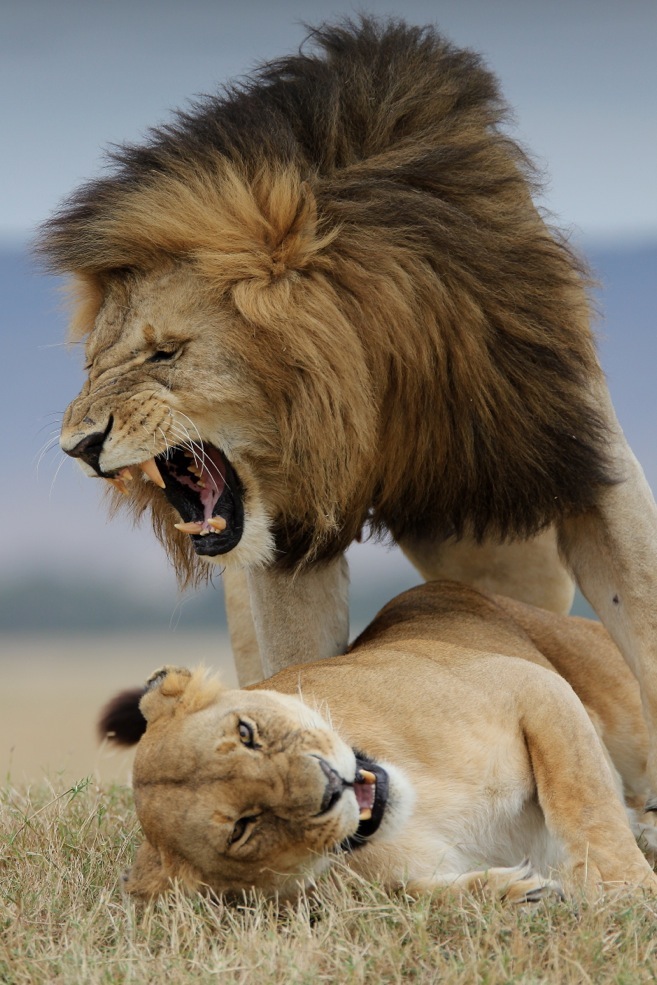
B4Life in images
Images from EU-funded projects to protect biodiversity and support sustainable livelihoods.
Photos (16)

Only 250 lions remain in West Africa and at current rates of destruction there will be none left five years from now. Lions are killed by poison by animal herders competing for resources and are symptomatic of the conflict between humans and animals in certain regions. Lion products are also used to replace tiger products in Chinese medicine. Copyright EC, credit Tanguy Dumortier

A park protected by the EU since 1988, which used to be home to one of the largest herds of African elephants. Elephant populations are being decimated for ivory: 25-35 000 are killed each year, or one every 15 minutes. At this rate, there will be no elephants left in Africa in 10 to 15 years. The EU is putting a lot of effort into protecting them. Copyright EC, credit Tanguy Dumortier

In Central Africa in particular, protein intake by rural populations is largely based on fish and bushmeat. Unregulated hunting and fishing not only affects biodiversity; it will also create a nutrition problem in the medium to long term. Copyright EC, credit Tanguy Dumortier

Threatened by oil exploitation by European companies, the Virunga National Park is an important habitat for mountain gorillas. The EU has provided support to protect Virunga, the first national park created in Africa, since 1989. Copyright EC, credit Tanguy Dumortier

This most common species of gorilla is threatened by habitat destruction and the ebola virus: in some areas 80% of the population has been killed by ebola in recent years. Copyright EC, credit Tanguy Dumortier

Part of a programme of alternative development in the areas of Pozuzo and Palcazú (PRODAPP) Credit: Enrique Castro Mendívil

Programme of alternative development in the areas of Pozuzo and Palcazú (PRODAPP) Credit: Enrique Castro Mendívil

Making baskets as part of a project for the conservation and sustainable development of the bio-geography of Choco, Colombia.

Beneficiary of an EC funded sustainable development project in rural tourism Credit: Fundación Programa Andes Tropicales

Efforts to protect biodiversity should not increase the vulnerability or reduce the resilience of the rural poor, such as the Aka. EU support for measures to combat illegal logging requires forest-dwellers to be included in negotiation, dialogue and decision-making. Credit Nicolas Guyot

Ecosystem restoration of Sumatran forest. EU Program on Tropical Forests and other forests in developing countries.

Small scale fishers are being affected by large scale operations in shore in Bagamoyo, Tanzania. The EU is funding a project to investigate the utility of the Ecosystem Approach to Fisheries Management (EAFM) as a method for improving fisheries in small-scale tropical marine contexts. In many such areas, dwindling inshore fish stocks due to competition with large-scale fishing and coastal habitat change (e.g. mangrove cutting) are affecting traditional fishing grounds. The project is being implemented by WorldFish, partners, and other stakeholders in four countries: Indonesia; Philippines; Solomon Islands; and Tanzania.
EAFM focuses on all stakeholders within an ecosystem and all aspects of an ecosystem that is to be managed. For instance, it considers all uses of fisheries, all impacts on fish, habitat, and other people, as well as the social aspects of fisheries, so who participates and who benefits. It also considers non-fisheries issues. Copyright EC, credit: Samuel Stacey.

Small scale fishers are being affected by large scale operations in shore in Bagamoyo, Tanzania. The EU is funding a project to investigate the utility of the Ecosystem Approach to Fisheries Management (EAFM) as a method for improving fisheries in small-scale tropical marine contexts. In many such areas, dwindling inshore fish stocks due to competition with large-scale fishing and coastal habitat change (e.g. mangrove cutting) are affecting traditional fishing grounds. The project is being implemented by WorldFish, partners, and other stakeholders in four countries: Indonesia; Philippines; Solomon Islands; and Tanzania.
EAFM focuses on all stakeholders within an ecosystem and all aspects of an ecosystem that is to be managed. For instance, it considers all uses of fisheries, all impacts on fish, habitat, and other people, as well as the social aspects of fisheries, so who participates and who benefits. It also considers non-fisheries issues. Copyright EC, credit: Samuel Stacey.

Small scale fishers are being affected by large scale operations in shore in Bagamoyo, Tanzania. The EU is funding a project to investigate the utility of the Ecosystem Approach to Fisheries Management (EAFM) as a method for improving fisheries in small-scale tropical marine contexts. In many such areas, dwindling inshore fish stocks due to competition with large-scale fishing and coastal habitat change (e.g. mangrove cutting) are affecting traditional fishing grounds. The project is being implemented by WorldFish, partners, and other stakeholders in four countries: Indonesia; Philippines; Solomon Islands; and Tanzania.
EAFM focuses on all stakeholders within an ecosystem and all aspects of an ecosystem that is to be managed. For instance, it considers all uses of fisheries, all impacts on fish, habitat, and other people, as well as the social aspects of fisheries, so who participates and who benefits. It also considers non-fisheries issues. Copyright EC, credit: Samuel Stacey.

Mangrove replanting project, Bagamoyo, Tanzania. The EU is funding a project to investigate the utility of the Ecosystem Approach to Fisheries Management (EAFM) as a method for improving fisheries in small-scale tropical marine contexts. In many such areas, dwindling inshore fish stocks due to competition with large-scale fishing and coastal habitat change (e.g. mangrove cutting) are affecting traditional fishing grounds. The project is being implemented by WorldFish, partners, and other stakeholders in four countries: Indonesia; Philippines; Solomon Islands; and Tanzania.
EAFM focuses on all stakeholders within an ecosystem and all aspects of an ecosystem that is to be managed. For instance, it considers all uses of fisheries, all impacts on fish, habitat, and other people, as well as the social aspects of fisheries, so who participates and who benefits. It also considers non-fisheries issues. Copyright EC, credit: Samuel Stacey.

Fisherwoman with her family, Bagamoyo, Tanzania. The EU is funding a project to investigate the utility of the Ecosystem Approach to Fisheries Management (EAFM) as a method for improving fisheries in small-scale tropical marine contexts. In many such areas, dwindling inshore fish stocks due to competition with large-scale fishing and coastal habitat change (e.g. mangrove cutting) are affecting traditional fishing grounds. The project is being implemented by WorldFish, partners, and other stakeholders in four countries: Indonesia; Philippines; Solomon Islands; and Tanzania.
EAFM focuses on all stakeholders within an ecosystem and all aspects of an ecosystem that is to be managed. For instance, it considers all uses of fisheries, all impacts on fish, habitat, and other people, as well as the social aspects of fisheries, so who participates and who benefits. It also considers non-fisheries issues. Copyright EC, credit: Samuel Stacey.
